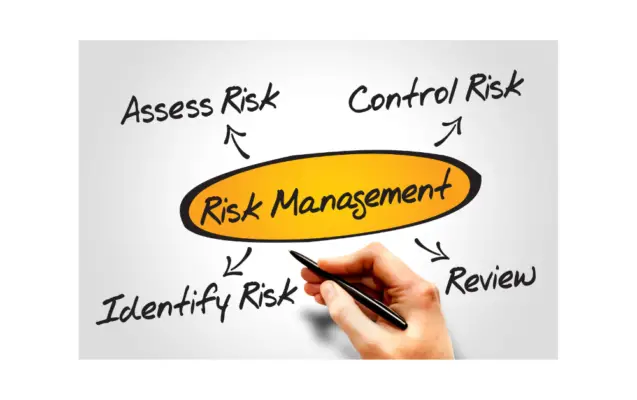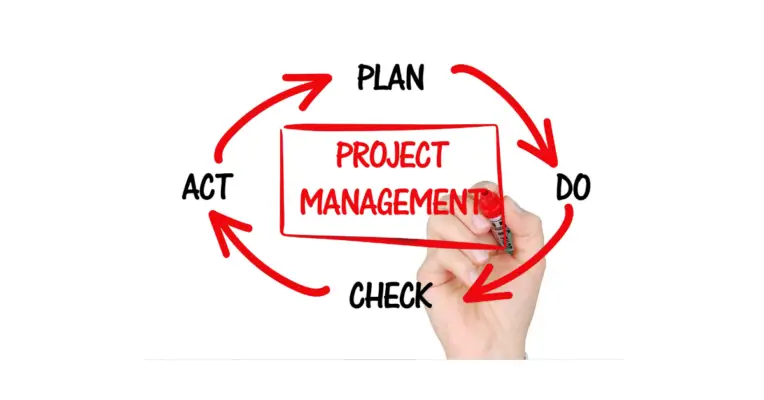Risk management is the process of identifying, assessing, and responding to risks. It is an essential component of project management, as it helps to ensure that projects are completed on time, within budget, and to the desired level of quality.
Various risks can impact a project, such as changes in scope, schedule delays, cost overruns, and resource shortages. Project managers can develop mitigation strategies to reduce the impact of these risks by implementing project risk management plans.
Risk management also helps improve communication among project stakeholders, as it ensures that everyone knows the potential risks and how they can be addressed. Ultimately, effective risk management is essential for ensuring the successful completion of any project.
Effective risk management techniques help identify the potential risks of a project. When you anticipate an unexpected situation, you should be prepared to take action when the situation arises.
To help you manage risk effectively, determine the best way for risk management strategies and determine the correct course. Project management is a critical skill that helps achieve a project’s objectives because planning and preparation are crucial to its success.
Risk management is an important part of any project. Identifying and mitigating risks can reduce the chances of something going wrong and jeopardizing the project’s success. In this blog post, we will explore the role of risk management in project management and discuss some key concepts to keep in mind.
We will also look at some tips and techniques that can be used to help manage risk effectively. If you’re interested in learning more about this essential aspect of project management, keep reading!
Definition of Risk Management
In Project Management, Risk Management is defined as assessing risk in a project that is capable of causing a significant adverse impact on its outcome. Project managers generally oversee risks throughout a given project. To effectively manage risks, a project manager must understand their goals and identify any potential obstacles to its effectiveness in delivering project success.
The risk management process has four key steps: identification, assessment, control, and monitoring. Identification is the first step in managing risk. Organizations need to identify all potential risks that could affect their business.
This can be done through various methods, including brainstorming sessions, surveys, interviews, and focus groups. Once all potential risks have been identified, they need to be assessed. This involves determining the likelihood of each risk occurring and the potential impact it could have on the organization.
Once the risks have been assessed, controls must be implemented to mitigate them. These controls include policies and procedures, training programs, and insurance coverage. Finally, the risks need to be monitored on an ongoing basis to ensure that they remain within the organization’s acceptable level of exposure.

Definition of Risk Management in Projects
Project risk management consists of finding and analyzing risks during the project’s lifecycle to help the project meet its goals and remain successful. Risk Management is a process of identifying the possibility of the risks occurring on the project and managing that risk when this happens. Risks a project could have may affect the project’s timeline, performance, or budget.
Project risks will include positive risks and negative risks. Effective risk management strategies reduce negative risks and enhance positive risks. Successful project managers recognize and understand risk mitigating exposure of various risk categories, internal or external.
Roles in Project Risk Management
The risk owner
All risks belong directly or indirectly to a person, company/stakeholder liable for them. They collaborate with risk managers, who can provide comprehensive technical details. It is possible to start at the source to define a particular cause of the risk and its consequences.
Therefore, the risk management firm will keep the updated information. It is a process that determines the strategy, the treatment plan action and coordinates the ownership of such activities. Obviously, everything will be supported by the risk manager. Risk owners must adhere in all respects to a specific set of dates for their mitigation and exploration plans.
The project manager
Project managers work in partnership with the risks managers. The risk manager has a clear expectation from the project manager and can validate these expectations. This includes a global perspective on the risks that the project presents.
Their roles in this area involve positioning themselves on crucial response strategies that risk owners suggest, such as acceptance of a strategy to reduce the probability. The project manager monitors critical risk levels to determine whether escalation should occur.
The Risk Manager
The Risk Manager provides a comprehensive overview of the risk/potential and their mitigation plans or opportunities, assisting the manager in decision-making. This is a critical component of risk management activities in project operations.
Risk managers ensure adherence to ROMP processes and procedures. They are primarily responsible for evaluating risks and identifying potential solutions.
Enterprise Risk Management Team
Larger companies may have enterprise risk management teams that manage risk at the organizational level. The risk team provides a detailed view of the organization’s risk/possibilities as well as ensures compliance with their risk management procedures.
This will require project risks to flow into the Portfolio level to manage business risks effectively. These team members are critical for the management of risk across all organizations.
The sponsor
Sponsors will recognize red flags on a given project at its creation. This first activity allows Risk Management to determine risk through participation by project stakeholders.
The sponsor will establish the risk budget using information from the Risk Manager. The project manager must validate the budget during its lifetime (cost of risks as incurred) or release funds in case of identified risks.
The project team
Risk Managers are part of project teams. Thus, the role can also be linked to other roles in this group. The project teams generally consist of the PMO scheduler and cost controllers. The Risk Manager meets with the project team for discussions about the potential impact on the schedule and cost of the project.

Managing Risk throughout the Organization
Incorporating a risk management protocol in organizational culture can reduce overhead. So every project starts without reinventing the wheel. Having records and history within your organization is one of the tools that can be used when approaching new risks.
Planning for success
A risk management plan is used to identify internal and external threats to projects. These plans generally include identified risks, probabilities of occurrences, possible impact, and suggested steps.
The low-risk event can be minimal without impact on costs, schedules, and outcomes. Moderate Risk can result in increased expense, disruption to the schedule, or poor performance. High-risk events can cause substantial increases to the budget, disrupt scheduled activities, or cause performance difficulties.
Communicating with stakeholders
Effective project managers communicate their project plans promptly to project sponsors, stakeholders, and project team members. This sets expectations for people that affect money or affect outcomes.
This guarantees that the project can continue as planned without interruption. Understanding potential risks in advance, eliminating them, or taking them seriously will make it easier for employees to respond to challenges.
Tips to Reduce and Manage Risk
Although project risk is impossible to eliminate fully, some ways to manage projects efficiently include:-
Create a risk management plan
All project managers know how vital solid project plans are when trying to solve a new challenge. Many ancillary plans include risk management plans. According to Emerson, the risk management strategy should outline the method of identifying and prioritizing risks, your risk tolerances, how your team responds to the risk, and communicates risks.
The planning phase can be hard to develop, and it pays to invest in a plan which guides the project’s execution.
Understand the risk event
One commonly cited mistake in risk management involves the perception that risk is about the possibility, not the risk event itself. Some people also view failure to meet a deadline to finish a project as a threat.
Although a lack of deadlines may be harmful, that’s not the risk. Instead, consider risk as such if there is X, Y, resulting in Z effects. This will allow you to know how you will address this problem.

Keep your risk register up to date
You can also use a project risk register as part of an individual risk management plan to track the risks and potential risks that might affect your projects. The document will help you keep up with potential problems, but keep this updated for a quick snapshot to use.
Use your risk register to track the risks resulting from your team’s response and the new risk your team uncovered but did not know about.
Conclusion
Risk management is an important process in any project and should be given the attention it deserves. Understanding the different types of risks and how to mitigate them can ensure that your project stays on track and delivers the desired results. In this blog post, we’ve outlined the basics of risk management so that you can start applying these concepts to your own projects. Are you ready to get started?

Chris Ekai is a Risk Management expert with over 10 years of experience in the field. He has a Master’s(MSc) degree in Risk Management from University of Portsmouth and is a CPA and Finance professional. He currently works as a Content Manager at Risk Publishing, writing about Enterprise Risk Management, Business Continuity Management and Project Management.

